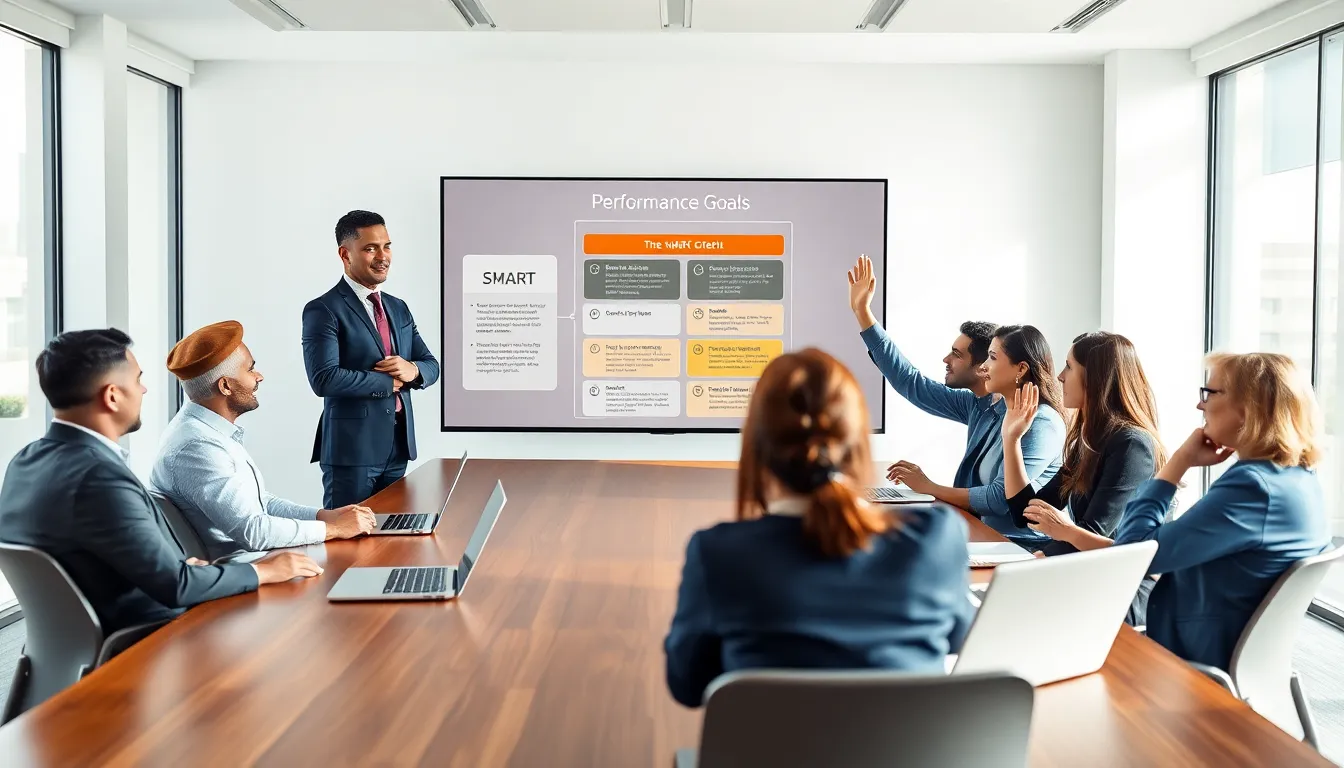In the fast-paced world of business, leadership can make or break a team. But how do you know if your boss is a visionary or just good at pretending? Enter leadership reviews—the secret sauce for uncovering the truth behind the office door. These evaluations not only help employees voice their opinions but also shine a light on the quirks and qualities that define effective leadership.
Imagine a world where feedback transforms your workplace into a thriving hub of innovation and collaboration. Leadership reviews can turn the tide, offering insights that empower leaders to grow and adapt. So buckle up and get ready to explore the ins and outs of leadership reviews, where honesty meets humor, and every evaluation could lead to a brighter, more productive work environment.
Table of Contents
ToggleUnderstanding Leadership Reviews
Leadership reviews assess a leader’s effectiveness within their role. These evaluations offer valuable insights into a leader’s strengths and areas for improvement, facilitating growth in the workplace.
Definition of Leadership Reviews
Leadership reviews consist of systematic assessments evaluating a leader’s performance, behavior, and impact on their team. These reviews often include feedback from peers and subordinates, allowing for a comprehensive understanding of leadership styles. Evaluation methods can vary, encompassing performance metrics, 360-degree feedback surveys, or structured interviews. The goal remains consistent: to identify how leadership traits align with organizational objectives.
Importance of Leadership Reviews
Leadership reviews significantly influence organizational success. Effective evaluations provide a framework for leaders to receive constructive feedback, highlighting areas for development. Regular reviews foster transparency and communication, promoting a culture of accountability. Additionally, they directly contribute to employee engagement by showing that their feedback matters. Research indicates organizations with robust leadership evaluation processes experience higher employee satisfaction and retention rates. Investing time in leadership reviews supports continuous improvement, ultimately driving better team performance.
Types of Leadership Reviews

Leadership reviews fall into two main categories: formal and informal. Each type serves distinct purposes and contributes to overall leader development.
Formal Leadership Reviews
Formal leadership reviews typically employ structured assessment tools like performance metrics and 360-degree feedback surveys. Organizations conduct these evaluations on a scheduled basis, often annually or semi-annually. Participants usually include peers, supervisors, and direct reports. Feedback gathered through formal reviews often leads to actionable insights for leaders. Data analyses reveal patterns in leadership effectiveness, allowing organizations to identify top performers and those needing support. Companies implementing formal reviews frequently notice improved leadership strategies that drive engagement.
Informal Leadership Reviews
Informal leadership reviews occur more spontaneously and focus on day-to-day interactions. Feedback may come from casual conversations, team meetings, or performance check-ins. This type of review fosters open communication and immediate feedback among team members. Leaders often gain insights about their performance in real-time, enhancing adaptability. For instance, employees might share observations during team discussions, contributing to a culture of continuous improvement. Informal reviews encourage a relaxed atmosphere where constructive criticism can flourish, promoting trust and collaboration within teams.
Conducting Effective Leadership Reviews
Effective leadership reviews prioritize structured evaluation processes. Clear objectives guide these reviews, making the assessment more focused and relevant. Setting specific outcomes ensures all participants understand what to aim for during the evaluation. Aligning objectives with organizational goals enhances the relevance of the feedback collected. A well-defined purpose serves as a benchmark for assessing leadership effectiveness.
Gathering feedback from various sources enriches the review process. Combining insights from peers, subordinates, and self-assessments creates a comprehensive view of a leader’s performance. Surveys, one-on-one interviews, and group discussions provide diverse perspectives. Regular check-ins foster an environment of transparency, allowing leaders to gain immediate insights. Collecting feedback continuously, rather than seasonally, produces richer data for the evaluation.
Analyzing results effectively allows organizations to identify patterns in leadership performance. Clarifying strengths highlights areas where leaders excel, facilitating targeted development plans. Areas needing improvement become evident through data trends and comparative analyses. Using performance metrics alongside qualitative feedback enhances the understanding of a leader’s impact. Drawing actionable insights from the analysis promotes strategic enhancements in leadership practices.
Best Practices for Leadership Reviews
Leadership reviews benefit significantly from well-defined best practices. These strategies enhance the effectiveness of evaluations and improve overall leadership quality.
Engaging Stakeholders
Engaging stakeholders involves including various perspectives in the review process. Solicit input from employees across all levels, ensuring multiple viewpoints are considered. Involving peers and subordinates fosters a more accurate assessment of a leader’s performance. Additionally, conducting focus groups or surveys encourages open dialogue. By doing so, organizations create a sense of ownership among employees in the evaluation process. This engagement strengthens trust and accountability within teams. Ultimately, when stakeholders actively participate, the feedback becomes richer and more constructive.
Ensuring Objectivity
Objectivity is crucial for an effective leadership review process. Utilize data-driven methods such as performance metrics and 360-degree feedback surveys to minimize bias. Relying on quantitative data allows for clearer evaluations, while qualitative input enriches context. Establishing clear criteria for assessment helps maintain focus on relevant behaviors and outcomes. Encouraging anonymous feedback can further reduce biases and foster honesty. By prioritizing transparency and fairness, organizations enhance the credibility of the evaluation process. Objective feedback drives reliance on facts over opinions, creating a more balanced view of leadership effectiveness.
Continuous Improvement
Continuous improvement forms the backbone of effective leadership reviews. Regular evaluations contribute to ongoing development for leaders. Integrating real-time feedback mechanisms allows leaders to adjust behaviors promptly. Monitoring leadership performance over time identifies patterns and highlights strengths and weaknesses. Frequent check-ins ensure feedback doesn’t become stagnant, promoting a culture of growth. Organizations benefit when leaders embrace self-reflection and are open to learning from criticism. By incorporating continuous feedback loops, businesses foster adaptive leadership that positively impacts team dynamics and organizational success.
Leadership reviews are vital for cultivating effective leadership within organizations. They not only provide valuable insights into a leader’s performance but also create an environment where feedback is welcomed and utilized. By implementing both formal and informal review processes, companies can foster a culture of continuous improvement and adaptability.
The commitment to regular evaluations and real-time feedback ensures that leaders remain aligned with organizational goals and employee expectations. As organizations prioritize these reviews, they pave the way for enhanced collaboration and innovation. Ultimately, investing in robust leadership evaluation processes leads to increased employee satisfaction and retention, driving overall success.





